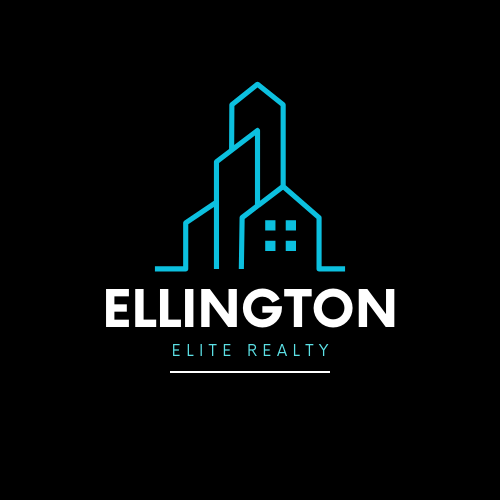
Cabrini-Green: Past, Present, and Future On Chicago's Northside
Cabrini-Green, located on Chicago’s Near North Side, is one of the most iconic and controversial public housing developments in American history. Once a symbol of urban decay and failed housing policy, it has undergone significant changes over the decades. Today, Cabrini-Green is a site of transformation, blending its historical legacy with ambitious redevelopment plans aimed at creating a vibrant mixed-income community.
The Past: A Vision Turned Tragic
Cabrini-Green began as the Frances Cabrini Homes in 1942, a public housing project designed to provide modern, affordable housing for returning World War II veterans and low-income families. Initially consisting of 55 two- and three-story rowhouses, it was expanded in the 1950s and 1960s with the addition of high-rise towers under the William Green Homes project. At its peak, Cabrini-Green housed approximately 15,000 residents in 3,600 units.
Initially envisioned as an integrated and utopian community near downtown Chicago, Cabrini-Green quickly became segregated and predominantly Black due to discriminatory housing policies. Over time, systemic neglect by the Chicago Housing Authority (CHA), poor construction quality, and lack of maintenance led to severe physical deterioration. Broken elevators, faulty plumbing, and unsafe living conditions became common. The area also became plagued by gang violence and poverty, turning Cabrini-Green into a national symbol of urban blight.
By the 1990s, Cabrini-Green was infamous for its crime rates and deteriorating infrastructure. The CHA faced mounting criticism for its mismanagement of public housing across the city. In response to these challenges, the U.S. Department of Housing and Urban Development took control of CHA operations in 1996. Shortly after, the CHA launched its "Plan for Transformation," which aimed to demolish high-rise public housing developments like Cabrini-Green and replace them with mixed-income communities.
The Present: A Neighborhood in Transition
The demolition of Cabrini-Green began in 2000 and concluded in 2011 with the removal of its last high-rise tower. Today, only a small portion of the original rowhouses remains standing but has been boarded up for years. The area has since undergone significant redevelopment due to its prime location near downtown Chicago.
The neighborhood now features a mix of upscale high-rises, townhomes, and mid-rise buildings alongside CHA-owned units for low-income residents. This mixed-income approach aims to create a more integrated community while addressing issues of concentrated poverty that plagued the original development.
Cabrini-Green’s transformation has also attracted new businesses, retail spaces, and green areas. However, tensions remain between preserving affordable housing for former residents and meeting the demands of urban revitalization. Many former residents have expressed concerns about being displaced or excluded from the redevelopment process despite promises made during relocation efforts.
The Future: Ambitious Redevelopment Plans
The future of Cabrini-Green is centered around large-scale redevelopment projects spearheaded by the CHA in collaboration with private developers. The finalized master plan aims to bring over 4,000 new residential units to the area across multiple sites. These units will include a mix of market-rate apartments, affordable housing options, and CHA-designated units for former residents.
Key components of the redevelopment include:
-
Residential Units: Plans call for high-rises, mid-rises, townhomes, and low-rise buildings to accommodate diverse income levels.
-
Green Spaces: Over eight acres of parks will be added or expanded to create more recreational areas for residents.
-
Community Amenities: New retail spaces, commercial developments, and pedestrian-friendly streetscapes will enhance walkability and access to services.
-
Historic Preservation: Some vacant rowhouses may be preserved as part of efforts to honor Cabrini-Green’s legacy.
The redevelopment is expected to be completed by 2026 and aims to balance modern urban living with commitments made to former residents during the relocation process.
Community Highlights
-
Location: Situated near downtown Chicago with easy access to major attractions like shopping districts and entertainment hubs.
-
Transportation: Well-connected by public transit with access to CTA trains and buses.
-
Cultural Legacy: Cabrini-Green’s history has been referenced in popular culture through works like Good Times (a sitcom set in public housing) and Candyman (a horror film partially filmed on-site).
Challenges Ahead
While Cabrini-Green’s redevelopment represents progress for urban renewal efforts in Chicago, challenges persist:
-
Affordable Housing: Ensuring that former residents can return remains a contentious issue.
-
Gentrification: Rising property values have sparked concerns about displacement among low-income families.
-
Community Integration: Balancing diverse income levels within one neighborhood requires careful planning.
How I Can Help Buyers, Sellers, and Investors
For Buyers
If you’re looking to purchase property in Cabrini-Green or its surrounding areas, I can help you navigate this rapidly changing market. Whether you’re seeking a modern condo in an upscale development or an affordable home that fits your budget, I’ll guide you through every step of the buying process. With new opportunities emerging from ongoing redevelopment projects, now is an exciting time to invest in this evolving neighborhood.
For Sellers
Selling property in Cabrini-Green? I’ll provide a detailed market analysis tailored to this unique area so your property is priced competitively while highlighting its value within this growing community. From strategic marketing plans to expert negotiation skills, I’ll ensure your property attracts serious buyers quickly.
For Investors
Cabrini-Green offers incredible opportunities for real estate investors looking to capitalize on its transformation into a mixed-income community. Whether you’re interested in purchasing rental properties or investing in new developments within this prime location near downtown Chicago, I can help identify high-potential opportunities that align with your financial goals.
Why Choose Cabrini-Green Today?
Cabrini-Green is no longer defined by its troubled past but by its potential as a thriving mixed-income community. Its proximity to downtown Chicago makes it an attractive location for professionals and families alike. With ongoing redevelopment bringing new housing options, green spaces, retail opportunities, and amenities, Cabrini-Green represents an opportunity for growth while honoring its historical significance.
Whether you’re buying your first home here, selling property within this transitioning neighborhood, or investing in real estate opportunities shaped by ambitious redevelopment plans—Cabrini-Green offers unparalleled potential within Chicago’s evolving landscape. Let me help you make your next move in this exciting neighborhood!

